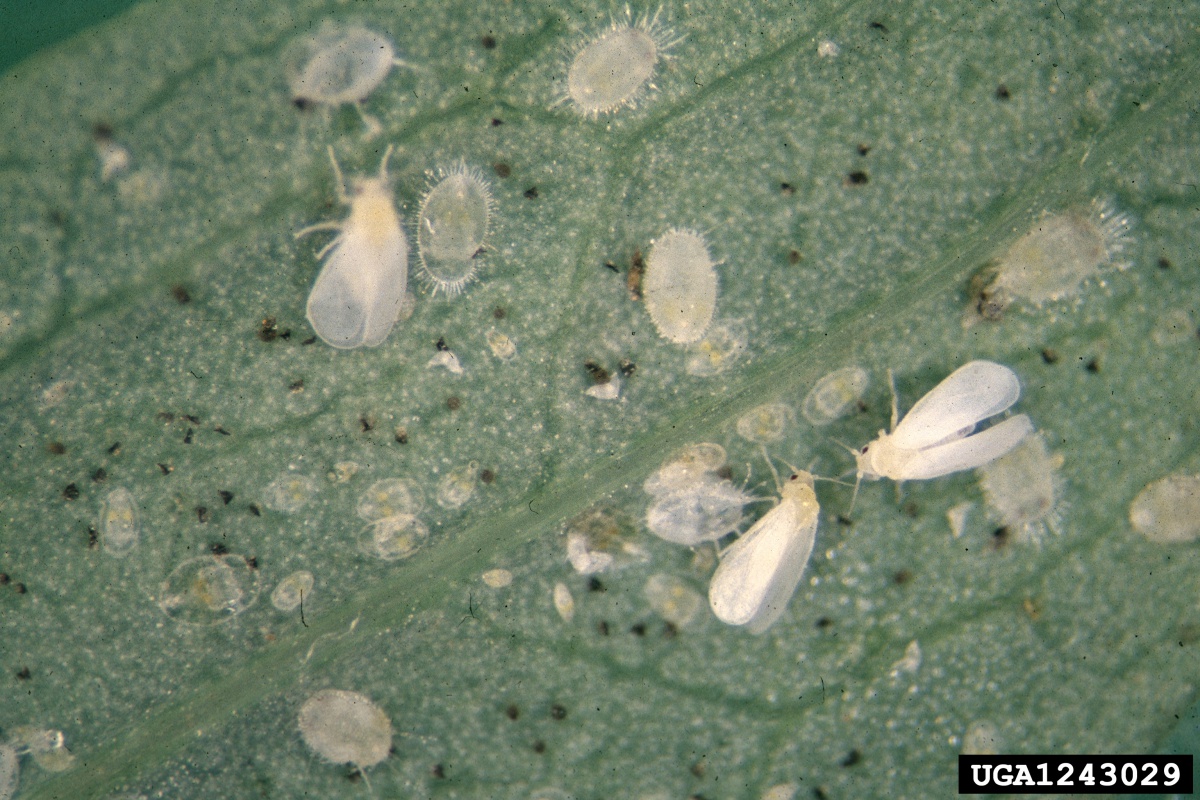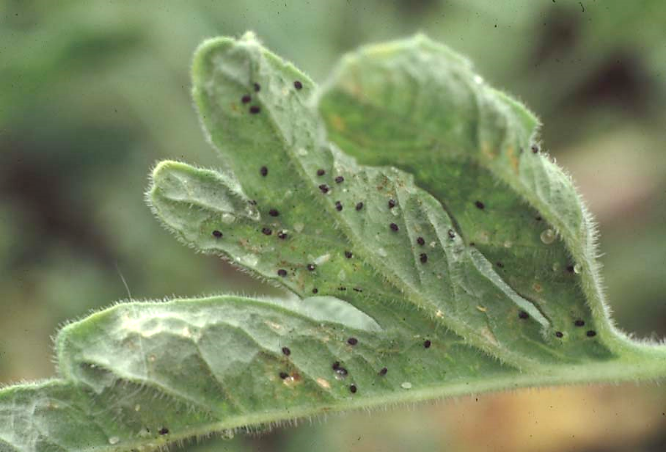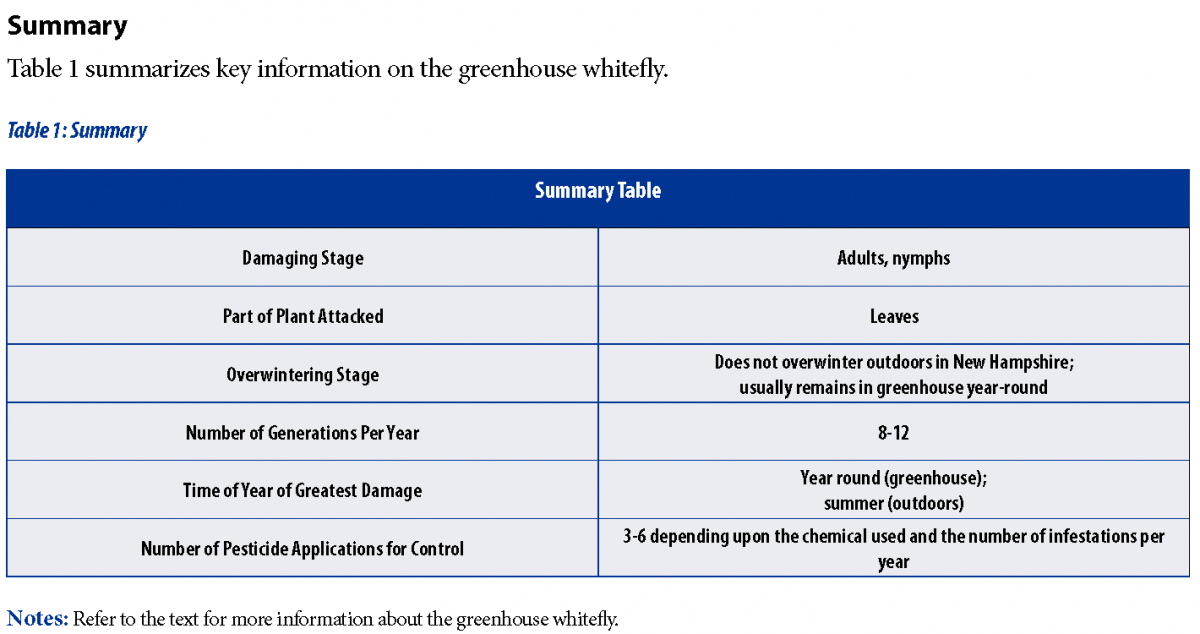The greenhouse whitefly, Trialeurodes vaporariorum, feeds on a variety of vegetable and floral crops. Pointsettia, cucumber, tomato, lettuce, geranium, pelargonium, salvia, ageratum, lantana, heliotrope, fuchsia, hibiscus, abutilon, solanum, and coleus are among favorites.
Description
The eggs of the greenhouse whitefly are very small, oval, light green to yellow-green and typically attached to the undersides of tender leaves by short stalks. The newly-hatched nymph is flat, oval, and nearly transparent. White waxen filaments radiate from the body of the last stage nymph. The adult is a small insect about 1/16" inch long, with four snow white wings and a yellow body.
Life Cycle
This insect does not overwinter outdoors in New Hampshire; it can only survive the winter in greenhouses. The life stages of whiteflies overlap, so that throughout the year, growers may simultaneously see eggs, nymphs, pupae, and adults. Damage from whiteflies is two-fold. Whiteflies suck the juices out of the host leaves, causing a lack of vigor and wilting. They also secrete a sticky material called honeydew, upon which a black fungus (sooty mold) develops. Sooty mold can eventually cover an entire leaf. This mold interferes with the plant’s photosynthetic processes, reduces its vigor, and eventually causes death.
Females lay 150 or more eggs on the underside of leaves, at a rate of about 25 per day. Hatching occurs within 10 days. Upon hatching, the nymph travels for a while. It then inserts its beak into plant tissues and remain there feeding for about a month while passing through four stages of development.
Unlike most sucking insects, whiteflies have a resting stage ("pupa") before becoming adults. The adults feed in the same manner as the nymphs. Whiteflies complete their life-cycle in 21-36 days, depending on the temperature.

Colorado State University, Bugwood.org.
A second species of whitefly, the Sweet potato whitefly, Bemisia tabaci, is also a serious problem in New Hampshire. It is very similar to the greenhouse whitefly. The main difference is that the Sweet potato whitefly lacks the spines (waxy filaments) on the last nymphal stage ("pupa"). Both species have become resistant to many insecticides, making control difficult.
Management
IPM Strategies:
- Sanitation - At the end of the growing season, clean the greenhouse thoroughly, eliminating all plant material (including under-bench weeds). You may wish to install screens to exclude insects. Inspect incoming plant material thoroughly before allowing it inside the greenhouse, and reject any that has whiteflies.
- Monitoring - You can use yellow sticky cards and leaf examinations to determine the whitefly population. Inspect the most susceptible plant species often.
- Biological Control - Releases of the parasitic wasp Encarsia formosa can be successful in controlling greenhouse whitefly. The wasp will also attack the silverleaf whitefly, but not effectively enough to satisfactorily control this species. Releases must be made early in the infestation, when the whitefly population is low.
- Chemical Control - The key to successful whitefly control is early and frequent pesticide applications before populations build up. All pesticides have the potential to damage sensitive plants. Check with the label and apply the pesticide to a few plants first.
Consult your county Extension Field Specialist for specific recommendations.
Credit: Alan T. Eaton.

are whitefly larvae that have been killed (parasitized)
by Encarsia formosa. Credit: Alan T. Eaton.

Download the resource for the complete factsheet.

